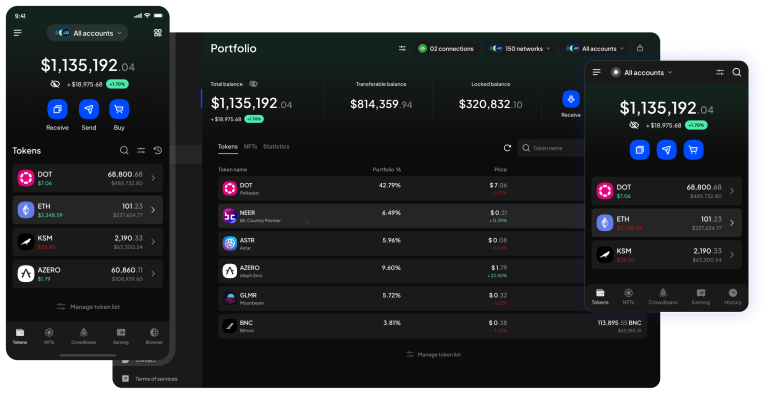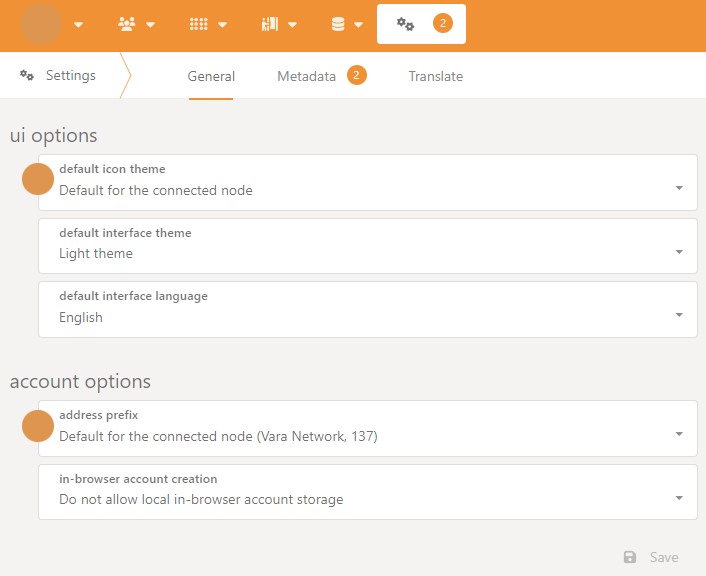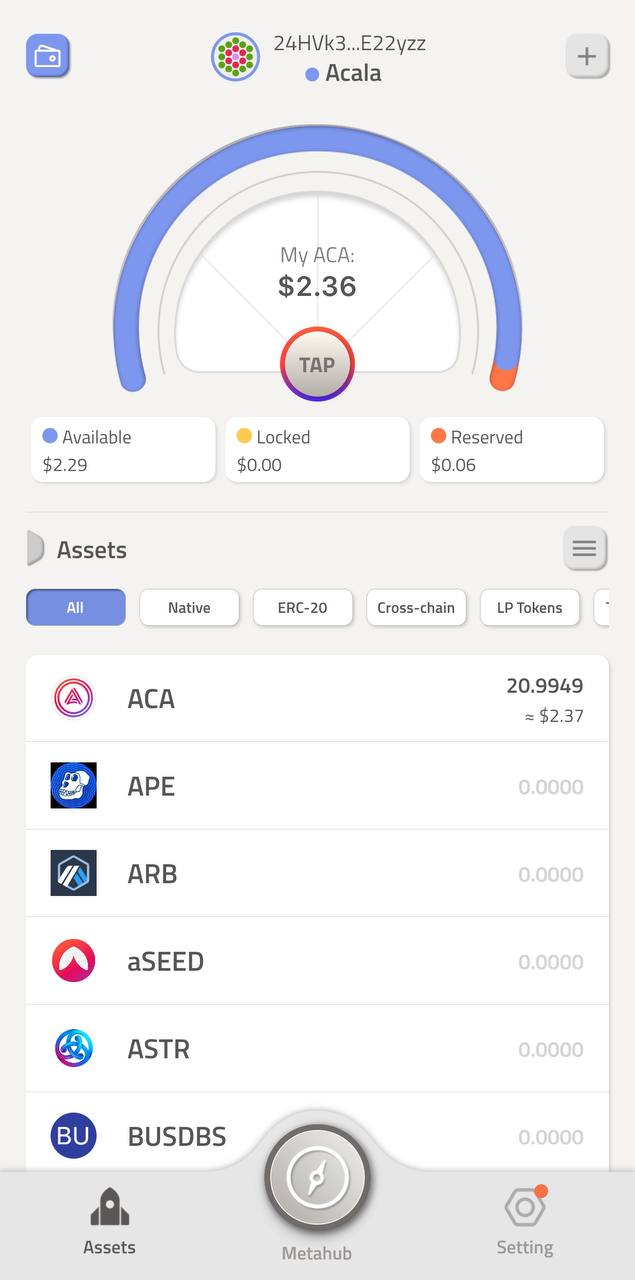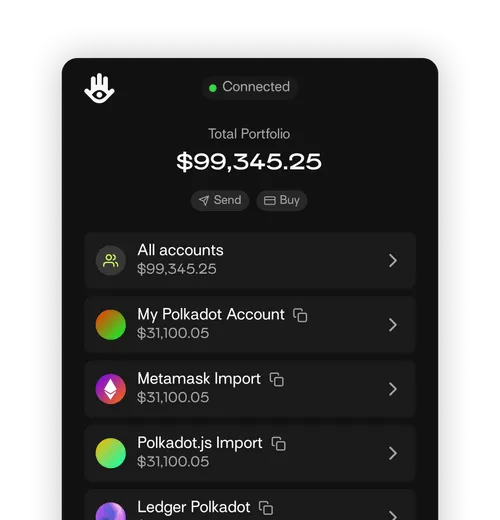Blockchain technology continues to revolutionize the digital landscape, and one platform that has caught the attention of many is Polkadot. As a next-generation blockchain platform, Polkadot offers an innovative way to connect multiple blockchains, enabling seamless interoperability and scalability. However, navigating the setup of a Polkadot wallet can be a daunting task for newcomers. In this comprehensive guide, we will walk you through the essential steps to streamline the Polkadot wallet setup process, ensuring that you can effortlessly enter the world of Polkadot with confidence and security.
Top-4 best DOT wallets
Subwallet
Website: https://www.subwallet.app/

- Multi-Chain Support: Subwallet provides support for multiple blockchains, allowing users to manage assets across different networks such as Polkadot, Kusama, and potentially others in the future. This multi-chain functionality is crucial for users who engage with various blockchain ecosystems.
- Asset Management: It offers a comprehensive solution for managing digital assets, including tokens and NFTs (Non-Fungible Tokens). Users can easily send, receive, and view their holdings within the wallet.
- Integration with dApps: Subwallet facilitates seamless interaction with decentralized applications on supported networks. This integration means users can conveniently use dApps for various purposes, such as decentralized finance (DeFi), without leaving the wallet interface.
- Staking Features: For networks like Polkadot and Kusama that use a proof-of-stake consensus mechanism, Subwallet may offer staking features. This allows users to participate in network security and governance while earning staking rewards.
- User-Friendly Interface: The wallet is designed to be accessible and easy to use, making it suitable for both beginners and experienced users. The interface is intuitive, helping users navigate and manage their assets with ease.
- Security Measures: Subwallet is likely to incorporate robust security features to protect users’ assets. This might include encryption, backup options, and secure connection protocols to ensure the safety of digital assets.
- Cross-Platform Availability: It may be available as a browser extension, mobile app, or desktop application, providing flexibility and convenience for users to access their wallet from various devices.
- Governance Participation: For networks that support on-chain governance, Subwallet could enable users to participate directly in governance proposals and voting, enhancing their engagement with the blockchain community.
- Customization and Advanced Features: Advanced users might find options for customization, like setting gas fees or interacting with smart contracts directly from the wallet.
- Community and Developer Support: As with many blockchain projects, community and developer support is crucial. Subwallet might offer resources or integrations that encourage community engagement and developer contributions.
It’s important to note that while Subwallet offers a range of features, users should always exercise caution and perform due diligence when managing digital assets, especially considering the evolving nature of blockchain technologies and the inherent risks associated with digital wallets and cryptocurrencies.
Polkadot.js

Website: https://polkadot.js.org/
Introducing Polkadot: The Next-Gen Blockchain Platform
Polkadot, developed by Web3 Foundation, is a groundbreaking blockchain platform that facilitates communication and interoperability between different blockchains. It utilizes a unique multichain network, enabling developers to create their own independent blockchains that can seamlessly interact with one another. This innovative design allows for enhanced scalability, security, and efficiency in the decentralized ecosystem.
Why Streamlining Wallet Setup Matters for Polkadot Users
Setting up a wallet is the gateway to accessing, managing, and transacting with your Polkadot assets. Streamlining the wallet setup process ensures a more user-friendly experience, reducing friction and potential security risks. With a simplified setup, Polkadot users, both new and experienced, can save valuable time and effort, allowing them to focus on exploring the vast opportunities within the blockchain ecosystem.
Step 1: Choosing the Right Polkadot Wallet Provider
When it comes to choosing a Polkadot wallet provider, it is crucial to consider factors such as security, user interface, and compatibility with various platforms. Popular wallet providers for Polkadot include Polkadot{.js} Extension Wallet, Math Wallet, and Ledger Live. Evaluate the features and reputation of each provider before selecting the one that best suits your specific needs.
Step 2: Creating Your Polkadot Wallet: A Comprehensive Guide
Once you have selected a wallet provider, creating a Polkadot wallet is a relatively simple process. Follow these steps to get started:
- Download and install the chosen wallet provider application or extension.
- Launch the wallet provider application and set up a new wallet.
- Generate a strong and unique passphrase for your wallet and encrypt it with a password.
- Carefully store your passphrase and password in a secure location, such as a hardware wallet or a password manager.
- Complete any additional authentication or verification steps required by your chosen wallet provider.
Step 3: Essential Security Measures for a Safe Wallet Setup
Securing your Polkadot wallet is paramount to protect your assets from potential threats. Here are some essential security measures to consider during the wallet setup:
- Enable two-factor authentication (2FA) for an added layer of security.
- Regularly update your wallet provider’s software to benefit from the latest security patches and enhancements.
- Be cautious of phishing attempts and only enter your wallet details on verified and trusted websites.
- Consider keeping only a portion of your funds readily accessible in your wallet, storing the rest in a cold storage solution for enhanced protection.
Polkadot Wallet Providers Comparison
| Feature | Subwallet | Polkadot.js | Parity Signer |
|---|---|---|---|
| User Interface | User-friendly; intuitive design | Technical; suited for advanced users | Minimalist; focused on security |
| Security Features | Encryption, backup options | High-level security standards; encryption | Offline transaction signing for enhanced security |
| Multi-Chain Support | Supports multiple blockchains | Primarily focused on Polkadot and Kusama | Limited to Polkadot and Kusama |
| Staking Options | Likely supports staking | Supports staking | May not support staking directly |
| Mobile App | Potentially available | No dedicated mobile app | Mobile app available |
| Browser Extension | Available | Available | Not available |
| Governance Participation | Likely supports governance actions | Supports governance participation | Limited governance functionality |
| Integration with dApps | Seamless integration | Good integration with dApps | Limited dApp interaction |
| Cross-Platform | Likely available on multiple platforms | Desktop-focused | Focused on mobile security |
| Customization | Customizable options for advanced users | Highly customizable for advanced users | Limited customization; security-focused |
| Developer Support | Community and developer resources | Extensive developer support | Focused on security; might have limited developer tools |
| Asset Management | Comprehensive asset management | Advanced asset management capabilities | Basic asset management |
Step 4: Configuring Your Wallet for Seamless Polkadot Integration
To fully integrate your wallet with the Polkadot ecosystem, follow these configuration steps:
- Connect your wallet to a Polkadot network node.
- Verify that your wallet is successfully connected by checking the network status and balance.
- Explore the different features and functionalities offered by your wallet provider, such as staking, governance, or participation in Polkadot’s parachains.
- Familiarize yourself with the Polkadot governance model and participate in community discussions to stay updated on the latest developments and upgrades.
Stepping into the world of Polkadot with a streamlined wallet setup process is crucial for users seeking to maximize their experience and security within this innovative blockchain platform. By carefully selecting a wallet provider, following the steps for wallet creation, implementing essential security measures, and configuring your wallet for seamless integration, you will be well on your way to enjoying the benefits and opportunities offered by Polkadot. Embrace this next-generation blockchain technology and let your journey into the decentralized future begin!


